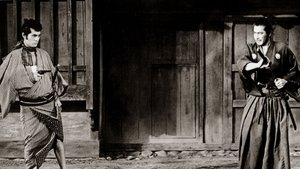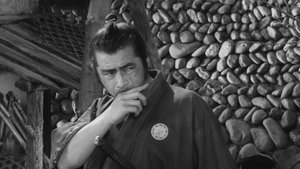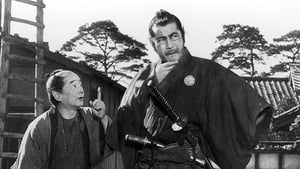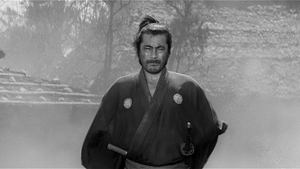Contact: [email protected]
Video Sources 0 Views

Synopsis
[ez-toc]






Rediscovering Brilliance: Yojimbo Colorized 1965
Introduction
In the realm of classic cinema, the debate over colorizing old films has always been a contentious topic. Enter “Yojimbo Colorized 1965,” a cinematic venture that thrusts the timeless 1961 Japanese masterpiece into a vibrant new light. In this article, we delve into the significance of Yojimbo Colorized, exploring its role in revitalizing old films through the controversial yet captivating art of colorization. As we navigate through the history, process, and impact of this project, we invite readers to join us on a journey that blends the old and the new, offering a unique perspective on the iconic Yojimbo.
Read Media File Transfer Agreement: Terms and Conditions
Read FAQ
Understanding Yojimbo: A Cinematic Masterpiece
To comprehend the importance of Yojimbo Colorized, we first need to revisit the roots of the original film. Directed by the legendary Akira Kurosawa and starring the iconic Toshiro Mifune, Yojimbo is a 1961 Japanese film that transcended cultural boundaries, leaving an indelible mark on global cinema. The story revolves around Kuwabatake Sanjuro, a rōnin, masterfully portrayed by Mifune, who manipulates two rival gangs in a small town for personal gain.
This samurai film stands out not only for its gripping narrative but also for its innovative blend of genres—melding the traditional samurai ethos with the grittiness of film noir. The collaboration between Kurosawa and Mifune, evident in multiple acclaimed films, including Rashomon and Seven Samurai, solidified their status as a dynamic duo in the annals of cinematic history.
The Art of Colorization in Film Restoration
The controversy surrounding the colorization of black and white movies has persisted for decades. Some argue that it breathes new life into old classics, making them more accessible to modern audiences, while purists insist that it tarnishes the original artistic vision. To truly appreciate Yojimbo Colorized, it’s crucial to understand the nuances of the colorization process and the ongoing debate surrounding its ethical implications.
Colorization involves digitally adding color to black and white films, a practice that has evolved significantly over the years. While some believe it enhances the viewing experience, others argue that it erases the unique aesthetic and mood created by black and white cinematography.
The Process Behind Yojimbo Colorized
The team behind Yojimbo Colorized faced the formidable task of infusing color into a revered classic without compromising its essence. Employing cutting-edge techniques, they navigated the delicate balance between artistic enhancement and historical accuracy. Preserving the integrity of the source material was paramount, ensuring that the colorization process elevated rather than overshadowed the original masterpiece.
Examining the Visual Transformation: Yojimbo in Color
The true litmus test for Yojimbo Colorized lies in its visual impact. Does the addition of color enhance or detract from the essence of the film? As we delve into a comprehensive analysis of the colorized version, we scrutinize the choices made in specific scenes. Comparisons between the original black and white film and its colorized counterpart reveal the subtle nuances and transformative power of colorization.
In scenes where the dusty streets of the small town come to life with vibrant hues, the colorized version breathes new energy into the narrative. However, the challenge lies in maintaining the stark contrasts and shadows that defined the original film’s film noir aesthetic. The success of Yojimbo Colorized hinges on striking this delicate balance.
Restoring Cinematic Brilliance: The Role of Yojimbo Colorized in Preserving Old Movies
Projects like Yojimbo Colorized play a crucial role in raising awareness about the ongoing efforts to preserve classic cinema. As technology advances, the need to adapt old films for new audiences becomes increasingly apparent. Yojimbo Colorized serves as a bridge between generations, introducing a timeless classic to viewers who might otherwise overlook black and white gems.
By embracing the colorization process, Yojimbo Colorized becomes a vehicle for preserving the cultural heritage embedded in the original film. It serves as a testament to the enduring relevance of Yojimbo and its ability to transcend the limitations of its time.
The Legacy of Yojimbo and Its Adaptations
Yojimbo’s influence extends far beyond its initial release. The film’s narrative innovation and memorable characters have inspired numerous adaptations and references in popular culture. Sergio Leone’s “A Fistful of Dollars” stands as a testament to Yojimbo’s impact, as it adapted the storyline into a Western setting, solidifying the film’s legacy on a global scale.
As Yojimbo continues to influence filmmakers across genres, the colorized version introduces the classic to a new generation of cinephiles. The juxtaposition of the original and the adaptations underscores the timelessness of the narrative and the malleability of its core elements.
Embracing the Old and the New: Appreciating Yojimbo in Both Black and White and Color
For the purists who swear by the authenticity of black and white cinema, Yojimbo remains a masterpiece in its original form. The monochromatic palette enhances the film’s moody atmosphere and adds a layer of timelessness that colorization might risk diluting.
However, Yojimbo Colorized invites a new perspective, offering a vibrant alternative that introduces the classic to a broader audience. By appreciating both versions, audiences can enrich their cinematic experience, recognizing the distinct qualities each brings to the table.
Should You Watch Yojimbo Colorized? Our Verdict
The ultimate question remains—should you invest your time in Yojimbo Colorized? The answer hinges on your cinematic preferences. If you hold the sanctity of black and white cinema in high regard, the original Yojimbo might be your preferred choice. The film’s timeless charm, enhanced by its stark visuals, remains unparalleled.
However, if you’re open to a reinterpretation that breathes new life into a classic, Yojimbo Colorized offers a fresh perspective. The vibrant colors add layers to the narrative, creating a visual experience that resonates with modern audiences.
Where to Watch Yojimbo Colorized Online
For those intrigued by the prospect of witnessing Yojimbo in color, legal streaming platforms provide convenient access to this unique version. Keep an eye on renowned platforms that champion classic cinema, as they might include Yojimbo Colorized in their catalog.
FAQs About Yojimbo Colorized
Q: Has Yojimbo Colorized been commercially successful? A: While initial reception varies, Yojimbo Colorized has garnered attention for its bold approach to revitalizing a classic. Commercial success depends on individual preferences, but it undoubtedly sparks conversations about the intersection of tradition and modernization in cinema.
Q: How have critics and audiences responded to Yojimbo Colorized? A: The response has been mixed. Some praise the project for its innovative take on a revered classic, while others critique it for tampering with a masterpiece. As with any artistic endeavor, opinions on Yojimbo Colorized are subjective.
Conclusion
In the grand tapestry of cinematic history, Yojimbo Colorized 1965 emerges as a bold brushstroke, reimagining a classic in a spectrum of colors. As we conclude our exploration, it’s evident that this project serves a vital role in keeping the legacy of the original film alive for new generations. Whether you choose to revel in the timeless elegance of black and white or embrace the vibrancy of color, the essence of Yojimbo endures, reminding us that cinema, much like life, thrives in the dynamic interplay of old and new. Explore the kaleidoscope of Yojimbo Colorized and form your own opinions on the evolving art of colorization in film restoration




















